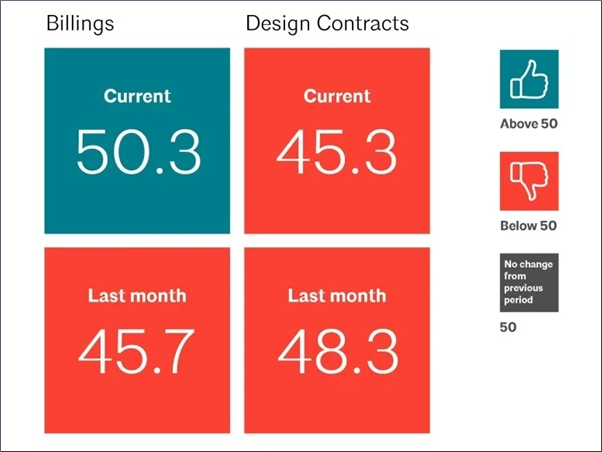Date: 14 November 2011
This aspect is so far unchanged, in spite of various problems occurred as a consequence of insufficient technical support in crucial decisions, mostly referring to the procurement process of fused-cast and other critical refractories in the glass industry.
Major mistakes in this process, can led to catastrophic accidents within the management of a furnace, with different degrees of global consequences for the company, the worst the smaller the company is. Almost invariably the financial impact of major refractory failure is orders of magnitude larger than the procurement savings which originated the chain of negative events.
One could expect that these kind of events should trigger a critical review of the procurement process, but this is not given for granted when technical capability and its authoritative level are seriously depressed within a company organization. So, we have observed increasing frequency of accidents related to refractory application, in a timeframe coincidence to low-cost procurement in global companies financially driven, but this did not led to modifications in the procurement routine.
We may have to wait for more changes to come before to see again a better balanced procurement process.
In spite of the above scenario, penetration of western markets by low-cost manufacturers has been proceeding with a lower speed than expected by the low-cost producers and feared by western "historical" manufacturers.
Taking in consideration the commercial/financial approach to procurement and the huge cumulated overcapacity of low-cost fused cast manufacturers, this is not immediately obvious, therefore it is worth analyzing the driving forces staying behind this reduced speed of penetration:
Too much leverage on price
Low-cost producers based the initial success exclusively on price and this produced a firm convincement that a pure, hard commercial approach could have been always and forever the winning strategy. Unfortunately, keeping this firm approach in a scenario of strongly rising costs (and a very poor cost and margin control) has been draining out financial resources from the supplier.
The first victim of this shortage has been the technical/technological development of products and services, but ultimately even the sales, marketing and distribution was drained out of resources, seriously impairing the capacity to reach different layers of far away markets. It is not by chance that the largest penetration in big multi-national companies has been achieved predominantly through buyer's initiatives.
The impossibility of seriously developing products and services, and to build a proper distribution network has kept most of low-cost producers in a situation of being perceived 2nd tier quality and higher risk, to which most of mid and low-size western glassmakers are reluctant accessing.
Relatively high costs inflation for low-cost manufacturers
Most of raw materials and energy costs in China are equal or higher than for western manufacturers. Most of the competitiveness was and is therefore based on labor cost, and on the scarce inclination to profit of these enterprises. While more and more these companies are struggling to take control of their own finance, the labor cost inflation is running higher than in most western countries.
This scenario is therefore reducing the capacity of utilizing the ultimate commercial weapon for a continued penetration of western markets.
In several cases, these low-cost entities have resorted to western organization to penetrate markets and offer various levels of technical support between supplier and customers; these in-between organizations are, in most cases, absorbing commissions higher than the manufacturer margin and reducing the global competitiveness of these low-cost refractories in front of western Customers.
The governmental stimulus package for domestic market
Yes, in spite of statements about China being some sort of unique chimera between a communist and a capitalistic system, China is trying to firmly controlling its own (and not only) economic system. When the first global economic crisis went spreading worldwide, China decided to act differently than most western economies, and applied an impressive stimulus package to its domestic market.
So the domestic glass industry did not shrink and in most cases (float) kept on expanding. Low-cost fused cast refractory producers had a chance to sell (sometime with improved credit risk) domestically what was not possible to export.
The short term commitment to export was not as strong as it used to be in the past and several handicaps, as above mentioned, have not been faced, nor put on their way of resolution.
But, as rocks rises when water level lowers, these issues will become critical in the next future, when the effects of the stimulus package will fade and China system will have to trade inflation for global competitiveness.
Meanwhile, what happened in the field of the main western manufacturers of fused-cast refractories?
Major western manufacturers have been badly hit by a combination of financial, economical crisis and the advent of low-cost manufacturers as a consequence of markets globalization and products commoditization.
This nasty mix was yet another push toward consolidation, an insurmountable barrier for newcomers, and a clear indication for applying the classic countermeasures well tested in capitalistic systems: overhead and manufacturing costs reduction, downsizing, focus on servicing and customer fidelization.
Eighteen months ago, in view of the strong (and confirmed) financial orientation of Glass Industry and a foreseeable (but not confirmed) rapid recovery of markets, these classic countermeasures were looking relatively weak and the commoditization tsunami wave was looking like a clear indication for western manufacturers (and particularly the one not handling manufacturing resources delocalized in low-cost areas) to step down from commodities and focus on residual specialties.
Eighteen months later, western players are still there, no factories have been shut down (not even those localized in very expensive areas of Europe and USA) and, in spite of being very far from the ante-crisis peak production (levels that nobody believe will be repeated again), they are now beginning to financially breath again, thanks to a moderate market improvement and their integration in large refractory groups.
So, why western manufacturers of fused-cast have performed better than expected?
As we did for explaining the under-performing of low-cost manufacturers, we need to comment on the root causes of this over-performance:
The anti-crisis measures did work
Western manufacturers did a great job in cost reduction; overhead reduction, labor cost control (sometime reduction), volume leverage on raw material and auxiliary prices, automation, all these measures have been building a relative advantage versus the fragmented low-cost competition. This contributed to limit the competitiveness of low-cost manufacturers and sometime keep it under the critical threshold for a western Customer to procure low-cost.
All this has been not coming for free; a lot of frustration and pain has been circulating in these companies organizations, and R&D has been often depressed under the critical level to ensure future developments.
Technical services have also been stressed and stretched compromising efficiency, but Customer Service, Cooperative Actions have been maintained enough alive to make a difference against the very poor approach of low-cost competition.
The service component of fused-cast business was proven not negligible
There is a fraction, possibly between 10 and 20%, of the fused-cast business which is linked to a specific geographic area. Cooperative-intense business, emergency or short-term procurement link Customers to a relatively close manufacturer; Europe is home for multiple non low-cost fused-cast manufacturers, while NAFTA area is home for a single non low-cost manufacturer. Even large Glassmaker corporations which chose global and low-cost procurement must appeal to local suppliers when one month shipment from China is out of discussion.
Unfortunately for glassmakers, their increasingly precarious technical capability is increasing the occurrence of short-term procurement, where delivery and not price is the leading factor.
The low-cost manufacturers' mistakes
This is, in my opinion, by far the most important factor.
Should low-cost manufacturers have done the right thing, nothing could have savaged western manufacturers from an ineluctable decline.
I am not here to tell in details what they should do, but clearly the commercial arrogance to believe that price is the only world's mover, that every thing can be fixed through commercial transactions and that technical/technological support is not badly needed to stay in business in the long run, all these have to do with the self cornering in a situation where time is not working in their favor.
China's window of extreme competitiveness is on the closure move. Hard to say how long it will take, it could be five or ten years, but low-cost manufacturers will end up losing the low-cost attribute, and then their survival will have to go through inevitable consolidation, overcapacity closure and technological/marketing evolution.
The first to buy on this obvious concept will be among the few survivors.
Looking at these market dynamics from the standpoint of an independent technologist is offering a unique opportunity to help both sides of the battle field, customers and suppliers, western and low-cost manufacturers, helping them to take advantage of their strong points whilst preventing possible mistakes and, eventually, be a survivor and possibly a winner.
For those interested, you can read all my notes visiting my website at the link:
http://www.fusedcast.com/news.asp
At the bottom of that page, remember that the buttons back/next will lead you through my list of published News.
At the main menu option "Downloads":
http://www.fusedcast.com/download.asp
you will be able to freely download copies of my most recent published articles.
For those interested in my services to the industry, do not forget to visit my website at the address:
http://www.fusedcast.com
and feel free to use the contact form, or simply reply to this message.
Best Regards,
P. Carlo Ratto







Add new comment